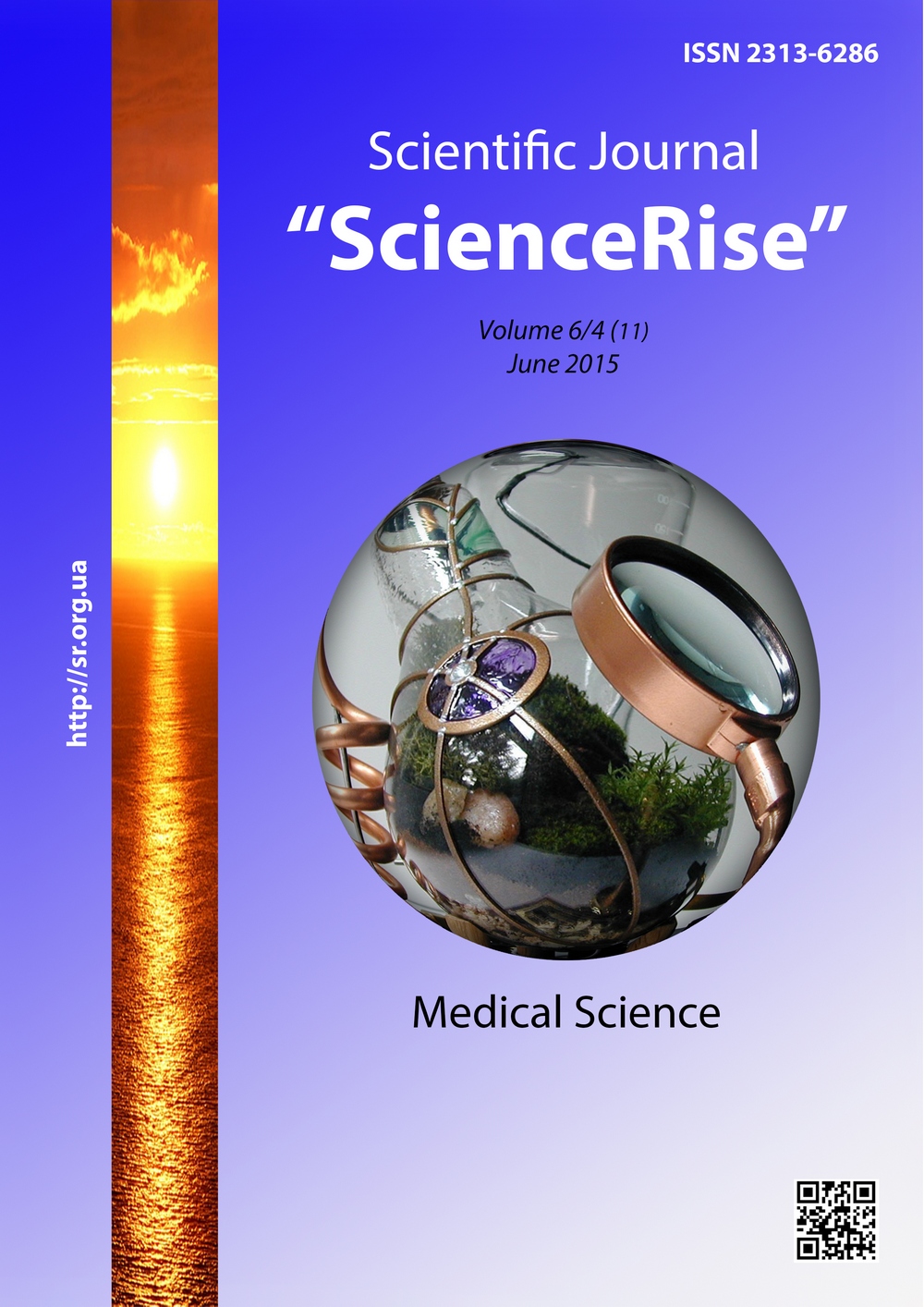Значение коморбидности для стратификации лечения острых миелоидных лейкозов у взрослых
DOI:
https://doi.org/10.15587/2313-8416.2015.45466Ключові слова:
острый миелоидный лейкоз, прогноз, стратификация лечения, коморбидность, индекс Чарлсон, выживаемостьАнотація
Смертность при лечении острого миелоидного лейкоза (ОМЛ) нередко обусловлена развитием тяжелых осложнений на фоне измененного соматического статуса при наличии коморбидности. Для определения влияния коморбидности на результативность лечения ОМЛ и выживаемость проанализированы истории 97 больных ОМЛ. Доказано, что высокий индекс коморбидности является значимым риском развития рецидива или прогрессирования ОМЛ, достоверно увеличивает риск смерти и ухудшает общую и безрецидивную выживаемость
Посилання
Grimwade, D., Hills, R. K. (2009). Independent prognostic factors for AML outcome. Hematology, 2009 (1), 385–395. doi: 10.1182/asheducation-2009.1.385
Etienne, A., Esterni, B., Charbonnier, A., Mozziconacci, M.-J., Arnoulet, C., Coso, D. et. al. (2007). Comorbidity is an independent predictor of complete remission in elderly patients receiving induction chemotherapy for acute myeloid leukemia. Cancer, 109 (7), 1376–1383. doi: 10.1002/cncr.22537
Sorror, M. L., Maris, M. B., Storb, R. et al. (2005). Hematopoietic cell transplantation (HCT)-specific comorbidity index: a new tool for risk assessment before allogeneic HCT. Blood, 106 (8), 2912–2919. doi: 10.1182/blood-2005-05-2004
Sorror, M. L., Sandmaier, B. M., Storer, B. E., Maris, M. B., Baron, F., Maloney, D. G. et. al. (2007). Comorbidity and Disease Status Based Risk Stratification of Outcomes Among Patients With Acute Myeloid Leukemia or Myelodysplasia Receiving Allogeneic Hematopoietic Cell Transplantation. Journal of Clinical Oncology, 25 (27), 4246–4254. doi: 10.1200/jco.2006.09.7865
Porta, M. G. D., Malcovati, L. (2009). Clinical relevance of extra-hematologic comorbidity in the management of patients with myelodysplastic syndrome. Haematologica, 94 (5), 602–606. doi: 10.3324/haematol.2009.005702
Zajrat'janc O. V., Kakturskij L. V. (2008). Formulirovka i sopostavlenie klinicheskogo i patologoanatomicheskogo diagnozov. Moscow.
Pal'cev M. A., Avtandilov G. G., Zajrat'janc O. V., Kakturskij L. V., Nikonov E. L. (2006). Oformlenie diagnoza. Moscow.
Vertkin, A. L., Rumjancev, M. A., Skotnikov, A. S. et. al. (2011). Komorbidnost'. Vestnik semejnoj medicin, 3, 40–47.
Charlson, M. E., Pompei, P., Ales, K. L., MacKenzie, C. R. (1987). A new method of classifying prognostic comorbidity in longitudinal studies: Development and validation. Journal of Chronic Diseases, 40 (5), 373–383. doi: 10.1016/0021-9681(87)90171-8
Campbell-Scherer, D. (2010). Multimorbidity: a challenge for evidence-based medicine. Evidence-Based Medicine, 15 (6), 165–166. doi: 10.1136/ebm1154
Leith, C. P., Kopecky, K. J., Chen, I. M. et al. (1999). Frequency and clinical significance of the expression of the multidrug resistence proteins MDR1/P-glicoprotein, MRP1, and LRP in acute myeloid leukemia: A Southwest Oncology Group Study. Blood, 94, 1086–1099.
Leith, C. P., Kopecky, K. J., Godwin, J. et al. (1997). Acute myeloid leukemia in the elderly: assessment of multidrug resistance (MDR1) and cytogenetics distinguishes biologic subgroups with remarkably distinct responses to standard chemotherapy: a Southwest Oncology Group study. Blood, 89, 3323–3329.
De Groot, V., Beckerman, H., Lankhorst, G., Bouter, L. (2004). How to measure comorbidity: a critical review of available methods. Journal of Clinical Epidemiology, 57 (3), 323. doi: 10.1016/j.jclinepi.2003.09.002
Rozzini, R., Frisoni, G. B., Ferrucci, L., Barbisoni, P., Sabatini, T., Ranieri, P., Guralnik, J. M., Trabucchi, M. (2002). Geriatric Index of Comorbidity: validation and comparison with other measures of comorbidity. Age and Ageing, 31 (4), 277–285. doi: 10.1093/ageing/31.4.277
Vardiman, J. W., Thiele, J., Arber, D. A., Brunning, R. D., Borowitz, M. J., Porwit, A. et. al. (2009). The 2008 revision of the World Health Organization (WHO) classification of myeloid neoplasms and acute leukemia: rationale and important changes. Blood, 114 (5), 937–951. doi: 10.1182/blood-2009-03-209262
Löwenberg, B., Ossenkoppele, G. J., van Putten, W., Schouten, H. C., Graux, C., Ferrant, A. et. al. (2009). High-Dose Daunorubicin in Older Patients with Acute Myeloid Leukemia. New England Journal of Medicine, 361 (13), 1235–1248. doi: 10.1056/nejmoa0901409
Gricaev, S. V., Martynkevich, I. S., Martynenko, L. S. et. al. (2010). Sravnitel'nyj analiz kariotipa pozhilyh bol'nyh mielodisplasticheskim sindromom i ostrym mieloidnym lejkozom. Klinicheskaja onkogematologija, 2, 114–118.
##submission.downloads##
Опубліковано
Номер
Розділ
Ліцензія
Авторське право (c) 2015 Надежда Валерьевна Горяинова

Ця робота ліцензується відповідно до Creative Commons Attribution 4.0 International License.
Наше видання використовує положення про авторські права Creative Commons CC BY для журналів відкритого доступу.
Автори, які публікуються у цьому журналі, погоджуються з наступними умовами:
1. Автори залишають за собою право на авторство своєї роботи та передають журналу право першої публікації цієї роботи на умовах ліцензії Creative Commons CC BY, котра дозволяє іншим особам вільно розповсюджувати опубліковану роботу з обов'язковим посиланням на авторів оригінальної роботи та першу публікацію роботи у цьому журналі.
2. Автори мають право укладати самостійні додаткові угоди щодо неексклюзивного розповсюдження роботи у тому вигляді, в якому вона була опублікована цим журналом (наприклад, розміщувати роботу в електронному сховищі установи або публікувати у складі монографії), за умови збереження посилання на першу публікацію роботи у цьому журналі.

